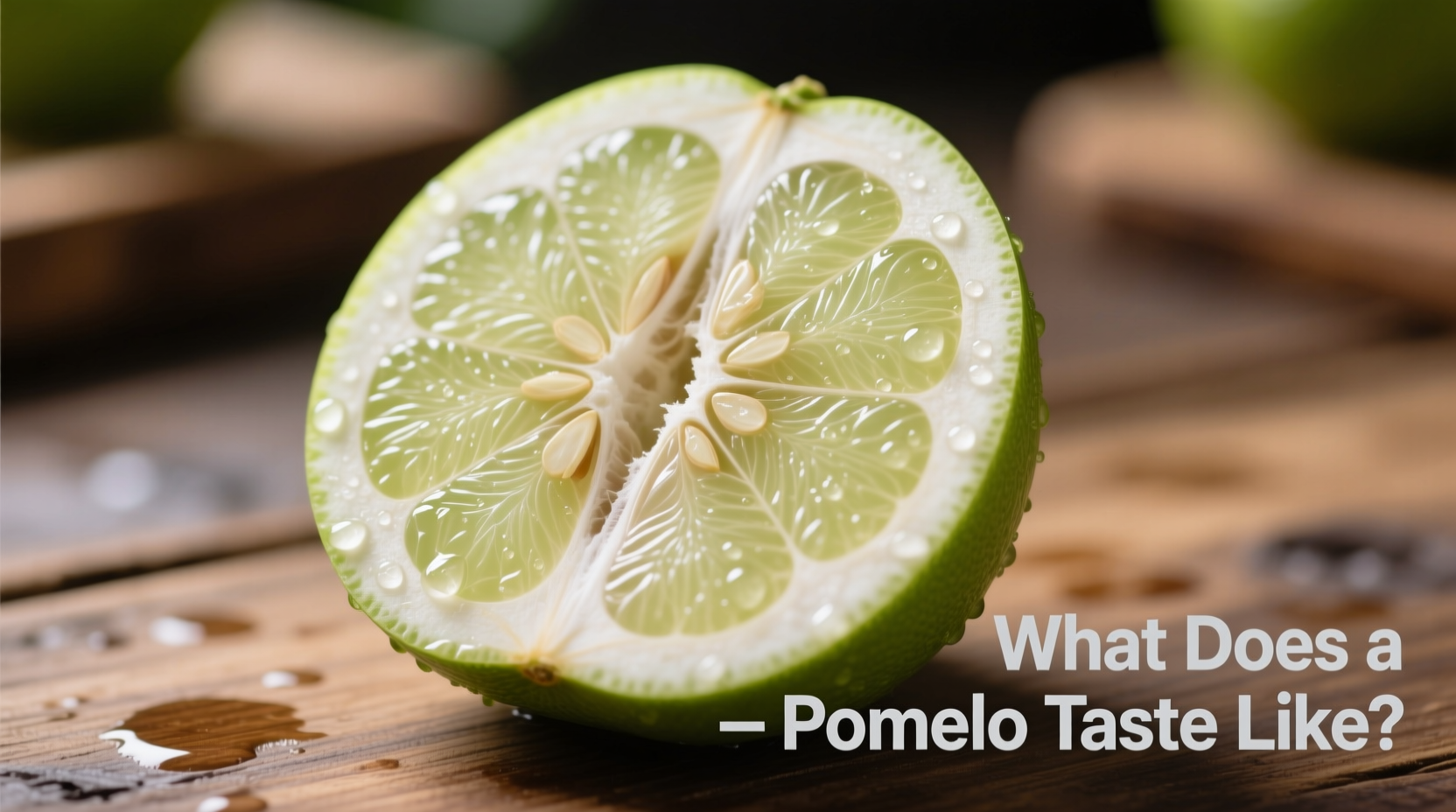Ever sliced into a pomelo for the first time and wondered what flavor adventure awaits? As someone who's tasted hundreds of citrus varieties across Michelin-starred kitchens and street food markets, I can tell you pomelo offers one of nature's most delightful surprises. This ancient citrus ancestor delivers a uniquely balanced taste experience that's captured culinary imaginations for centuries.
The Pomelo Flavor Profile Unveiled
When you bite into a perfectly ripe pomelo segment, you'll immediately notice its juicy, tender flesh releases a burst of flavor that's distinctly citrus but far more nuanced than its modern cousins. The predominant taste is a clean, refreshing sweetness reminiscent of a honeyed grapefruit, but without the aggressive bitterness that often deters newcomers to the citrus family.
Unlike grapefruit's sharp, sometimes confrontational acidity, pomelo offers a gentle tartness that dances on your palate. The aftertaste carries subtle floral undertones—think hints of orange blossom or magnolia—that linger pleasantly without overwhelming your senses. This complex flavor profile explains why pomelo has been cherished in Southeast Asian cuisine for over 4,000 years, where it's traditionally served during Lunar New Year celebrations as a symbol of prosperity and good fortune.
| Citrus Fruit | Sweetness Level | Bitterness Level | Floral Notes |
|---|---|---|---|
| Pomelo | High (10-14°Brix) | Low | Pronounced |
| Grapefruit | Moderate (8-11°Brix) | High | Minimal |
| Orange | High (12-15°Brix) | None | Subtle |
| Mandarin | Very High (11-16°Brix) | None | Minimal |
How Pomelo Compares to Other Citrus Fruits
Understanding pomelo's taste becomes much clearer when comparing it to citrus fruits you already know. While often mistaken for a giant grapefruit, pomelo is actually grapefruit's ancestor—citrus historians believe grapefruit emerged as a natural hybrid between pomelo and orange in the 18th century.
Compared to grapefruit, pomelo is noticeably sweeter with only a fraction of the bitterness. The pith (white membrane) surrounding pomelo segments is thicker and more bitter than in other citrus, but when properly removed, the flesh reveals its true sweet character. Unlike oranges, which deliver straightforward sweetness, pomelo offers more complex flavor layers with that distinctive floral finish.
Factors That Transform Pomelo's Taste Experience
Your pomelo tasting experience depends heavily on several key factors that even many experienced fruit lovers overlook:
Ripeness Indicators You Can Trust
Unlike many fruits, pomelo doesn't continue ripening significantly after harvest. The USDA Agricultural Research Service confirms that pomelo's sugar content peaks at harvest time, making selection critical. Look for fruits with:
- Yellow or pale green skin (avoid green-tinted specimens)
- Firm but slightly yielding texture when gently squeezed
- Heavier weight relative to size (indicates juiciness)
- Distinct citrus aroma at the stem end
Varietal Differences That Matter
Not all pomelos taste alike. The three main varieties deliver distinctly different flavor experiences:
- Chandler (pink flesh): Sweetest variety with raspberry-like notes
- Forbidden (red flesh): Most complex flavor with berry undertones
- Imperial (white flesh): Classic pomelo taste with clean citrus profile
Maximizing Your Pomelo Flavor Experience
Professional chefs know that how you prepare pomelo dramatically affects its taste. Follow these expert techniques to enjoy pomelo at its absolute best:
The Peel-and-Section Method That Preserves Flavor
Instead of simply cutting the fruit in half, use this method to minimize bitterness transfer:
- Cut 1 inch from both ends of the pomelo
- Score the rind vertically in 4-6 places
- Peel back the rind sections by hand
- Remove the thick white pith with a knife
- Separate segments at the membranes
This technique, recommended by culinary experts at the Culinary Institute of America, prevents bitter compounds from the pith transferring to the flesh during preparation.
Perfect Pairings That Enhance Pomelo's Natural Taste
Chefs worldwide use these flavor combinations to highlight pomelo's unique profile:
- With chili-lime salt for a Thai-inspired street food experience
- Drizzled with honey and mint for a refreshing dessert
- Combined with avocado and grilled shrimp for a sophisticated salad
- Blended into a smoothie with coconut water and ginger

When Pomelo Might Not Meet Your Taste Expectations
While pomelo delights most palates, certain conditions can compromise its flavor experience. According to research from the University of California's Citrus Variety Collection, pomelo's taste suffers when:
- Exposed to temperatures below 40°F (causes chilling injury)
- Stored for more than 3 weeks (flavor compounds degrade)
- Grown in overly nitrogen-rich soil (increases bitterness)
- Harvested before reaching full maturity (reduced sugar development)
Understanding these limitations helps set realistic expectations for your pomelo tasting experience. When conditions are optimal, however, few fruits deliver such a harmonious balance of sweet, tart, and floral notes.
Discovering Your Perfect Pomelo Moment
Whether you're a citrus connoisseur or trying pomelo for the first time, understanding its flavor profile transforms your experience from simple consumption to culinary discovery. The next time you encounter this ancient fruit, remember that its mild sweetness, subtle floral notes, and refreshing tartness represent thousands of years of natural selection—making each bite a connection to culinary history itself.











 浙公网安备
33010002000092号
浙公网安备
33010002000092号 浙B2-20120091-4
浙B2-20120091-4